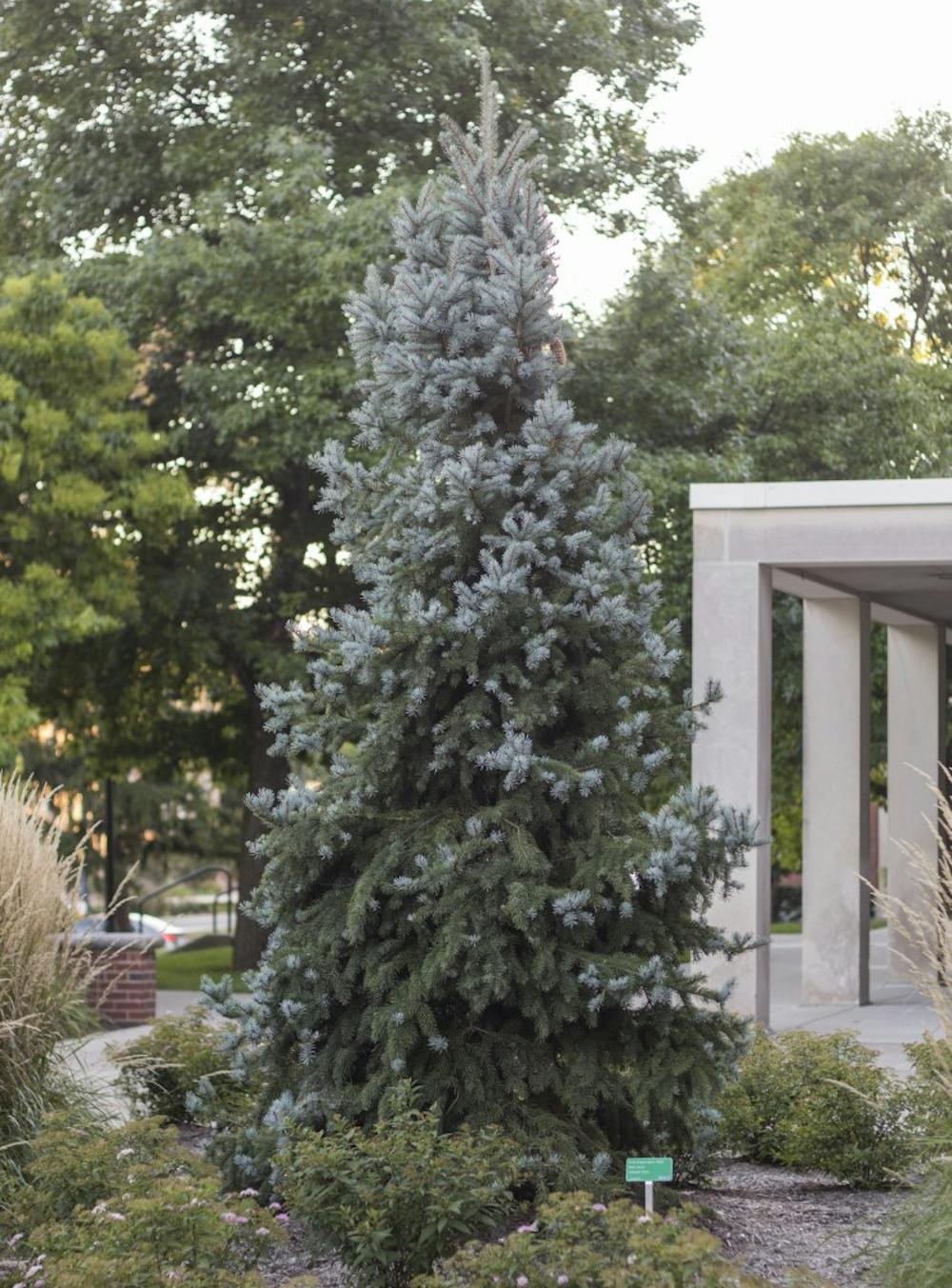Tree trail maps:
After mapping the location of the 7,400 trees on Ball State's campus, Michael Planton, the director of Ball State's arboretum, is ready for students to finally stop and appreciate them.
The arboretum (a collection of catalogued and inventoried plants for those who aren’t in the “know” when it comes to botany) recently announced the launch of its tree trails program.
The five tree trails aren’t like the newly renovated Botsford/Swinford residence halls – a fairly obvious change to the way campus looks. Students won’t notice anything different as they hustle from building to building.
Instead, Planton and the rest of the arboretum committee have created routes utilizing Ball State’s existing sidewalks and paths. These trails, all around one mile in length, will pass by different kinds of trees – all listed on maps available through the university’s website.
Planton said he thinks the program will help Muncie locals and transplants see new value in leafy assets that Ball State has possessed for years.
It’s not the first time the university has attempted to spotlight its trees.
“Back in the early nineties, there was a reforestation committee on campus and they had developed tree trails and we had them marked,” said Planton.
Poor signage and vandal squirrels led to the early demise of the first crusade for the trees.
It wasn’t until a year and a half ago that Planton began tearing down the last of the unintelligible remnants from that first attempt. He also started re-identifying and mapping every tree.
In July, Planton’s efforts entered a new chapter when the Ball State arboretum gained accreditation from ArbNet, an organization that unites arboreta from all over the world.
Ball State’s arboretum is now required to educate the public and maintain a committee.
John Taylor is one of the arboretum’s four committee members. He also manages Christy Woods, a 17-acre forest on the southwest corner of campus.
Students of all ages use Christy Woods for educational purposes, but Taylor maintains that learning about trees, whether through his forest or on a tree trail, is for everyone, not just scholars.
Taylor hypothesizes that rejecting the natural world makes a person “less human.”
“When you feel like you are part of a larger context of living, of something alive, you tend to care more about others besides yourself,” he said.
Planton, on the other hand, recommends the trails for simpler purposes: a way to escape the residence halls or a guide for potential home landscaping.
Whatever a user's motivation, the trees might become easier to find later this year as Planton plans to release a tree trail app.
|
ree trail maps: |





